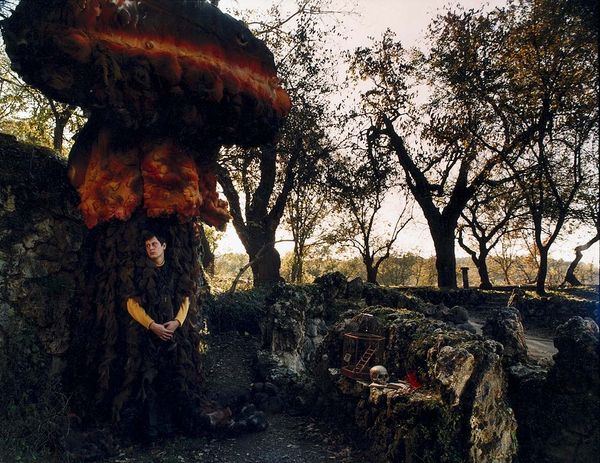
plein-air, c-print, photography
#
portrait
#
contemporary
#
plein-air
#
portrait subject
#
landscape
#
c-print
#
outdoor photograph
#
candid portrait
#
photography
#
single portrait
#
portrait photography
#
realism
Dimensions: image: 125.73 × 100.33 cm (49 1/2 × 39 1/2 in.) framed: 128.27 × 102.87 × 2.54 cm (50 1/2 × 40 1/2 × 1 in.)
Copyright: National Gallery of Art: CC0 1.0
Alec Soth's photograph captures a man holding a palm frond and a book, likely the Bible, against a disheveled backdrop. The palm, of course, is a symbol deeply rooted in religious history, evoking the story of Jesus's triumphant entry into Jerusalem. But observe how such symbols shift and resurface across time. In ancient Egypt, the palm represented immortality, while in Rome, victory. The Christian adoption of the palm, therefore, is not a singular event but an instance of cultural appropriation, layering new meaning onto an existing symbol. Consider, too, how collective memory influences our interpretation. The conscious mind recognizes the religious context, but subconsciously, we may also perceive echoes of triumph and resilience, emotions that resonate universally. Soth's photograph does not simply depict a religious observance, it triggers deep-seated cultural memories, engaging us on a profound, subconscious level. It reminds us that symbols are never static but constantly evolving, carrying the weight of history while adapting to new contexts.
Comments
No comments
Be the first to comment and join the conversation on the ultimate creative platform.













